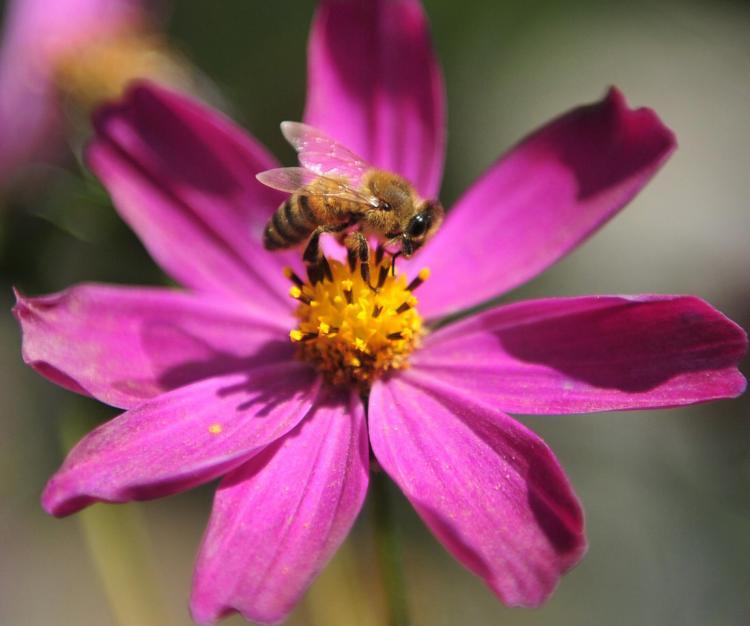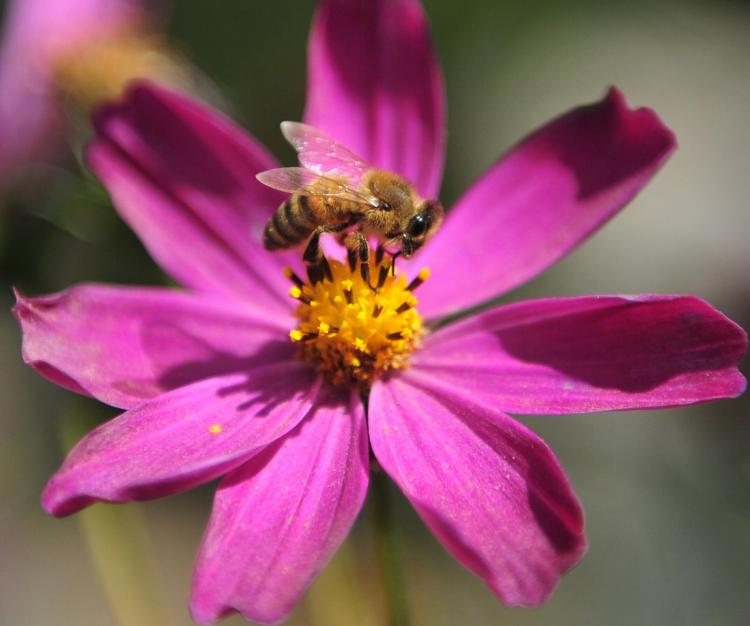She says as much as two-thirds of what we eat is pollinated by bees and without them we would be hard pressed to put food on the table.
“I say to people, What are you eating tonight? Most of that has to be pollinated somewhere along the line.
“Without bees you are just not going to get that food, or, if you do it is going to be very expensive.”
A recent study released in the United States is adding to fears of a worldwide decline in honey bee populations. Four out of eight bumble-bee species in the United States showed dramatic falls over a three-year period of up to 96 per cent.
University of Illinois entomology professor Sydney Cameron says the figures could be far worse, just “the tip of the iceberg,” according to online Science Daily.
New Zealanders generally believe the country’s economy may be more dependent on honey bees than any other country worldwide.
Moreover, Ministry of Fisheries and Agriculture (MAF) found in a 2005 study that most of the country’s horticultural and agricultural industries would not survive without honey bees.
Changing Landscapes Affect Bee Populations
John Hartnell, Federated Farmers Bees spokesperson, says the traditional habitat and foraging areas for both bumble and honey bees have changed over the years.
Sheep and cattle pastures have been steadily converting to intensive dairy farming.
“That process removes from the landscape all the things that used to be there, like gorse hedges and the bit of broom and the shelter belts—that obviously has an impact ... whether it is a bumble or a honey bee.”
An increasing number of beekeepers now derive income from pollinating for food production rather than the traditional honey.
The Trees are Bees program, set up last year by the industry, has provided advice to people from Northland to Southland on restabilising trees and plants that are most beneficial to honey bees.
Continued on the next page ...
No Honey Bees—No Kiwifruit Industry
The varroa mite infestation has been the biggest blow to beekeeping in hundreds of years, says Mr. Hartnell.
New Zealand’s billion dollar kiwifruit industry would disappear if there were no honey bees, he says. Failure to control the varroa mite would see the decimation of the entire honey bee population.
Bumblebee Hives a Back-up for Orchardists
Terril Marais, managing director for Zonda Resources, a specialist in bumble bees for pollinating services, hasn’t noticed a decline in bumble bees which she says are more robust than honey bees.
However, weather conditions will affect numbers.
“If we have very hot dry summers with poor pollen and nectar sources around, then the bee numbers the following years will definitely be down.”
Ms. Marais, who breeds the variety bombus terrestres, has seen a radical decline in feral honey bees due to the varroa mite and says many hobbyist beekeepers have also lost bees.
“This has certainly put more pressure on bumblebees as an alternative pollination in New Zealand,” she said.
Nearly all greenhouse tomatoes in New Zealand are pollinated by bumble bees, but the devastating varroa infestation of honey beehives has gradually led to an increasing interest from outdoor growers, especially cherry, blueberry, avocado and in particular the kiwi fruit orchards.
Keeping Diseases and Pests Out of New Zealand
Mr. Hartnell says New Zealand has to become a lot shrewder with biosecurity. Under trade agreements countries are demanding reciprocal rights.
“They have things we don’t want and diseases ... that’s probably the greatest challenge that MAF Biosecurity faces,“ he said. ”How do they create a balance without getting offside with everybody.”
There has been pressure on New Zealand to accept imports of Australian honey which could transport spoors of the European foulbrood. The bee brood disease has to be treated with antibiotics which could threaten sales of manuka honey, often used for its health benefits.
“I don’t believe at any stage that a risk is worth taking. If we know that a country and a product has the potential to bring something into New Zealand that we don’t have, then the answer should be no.”




